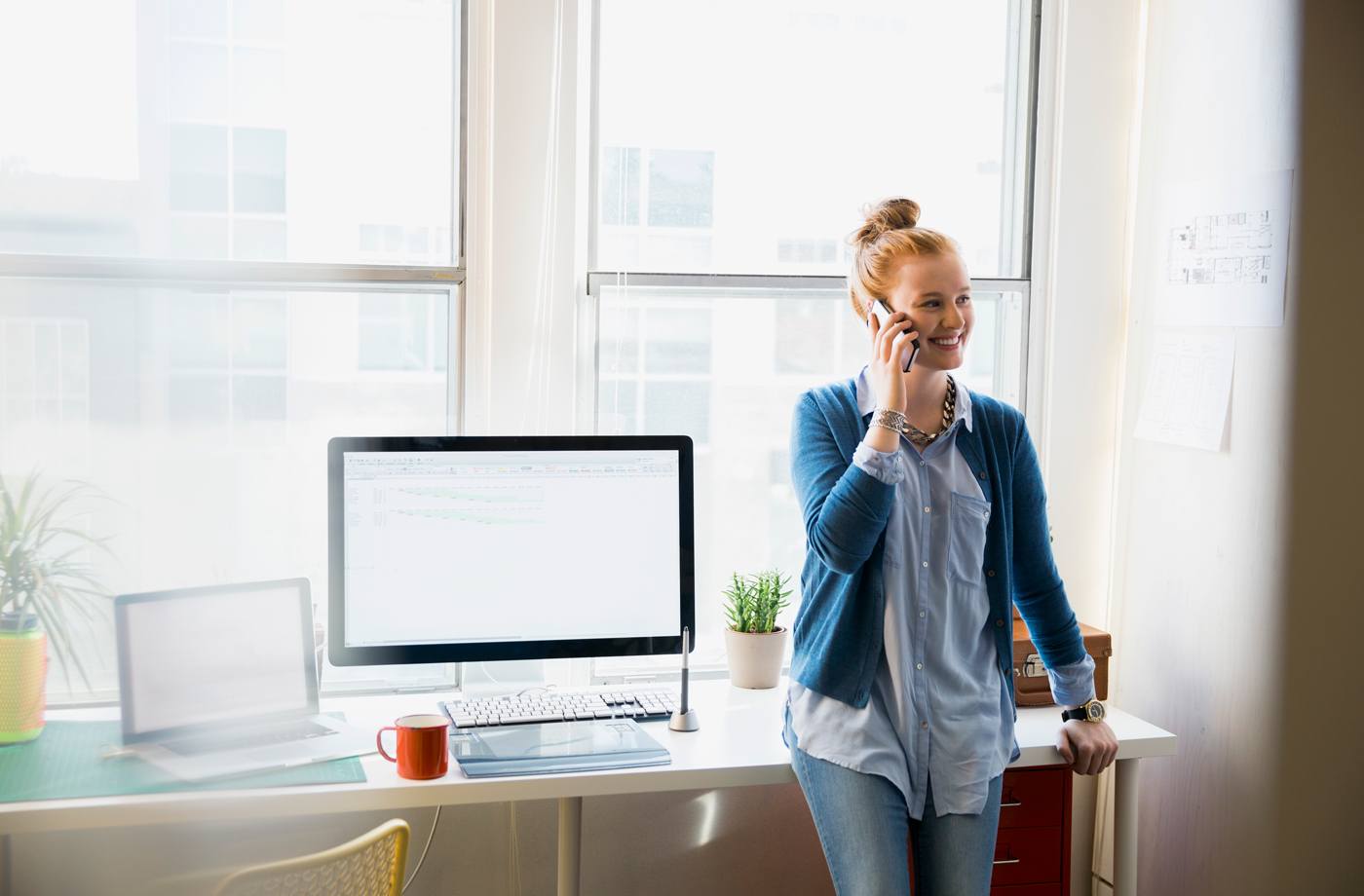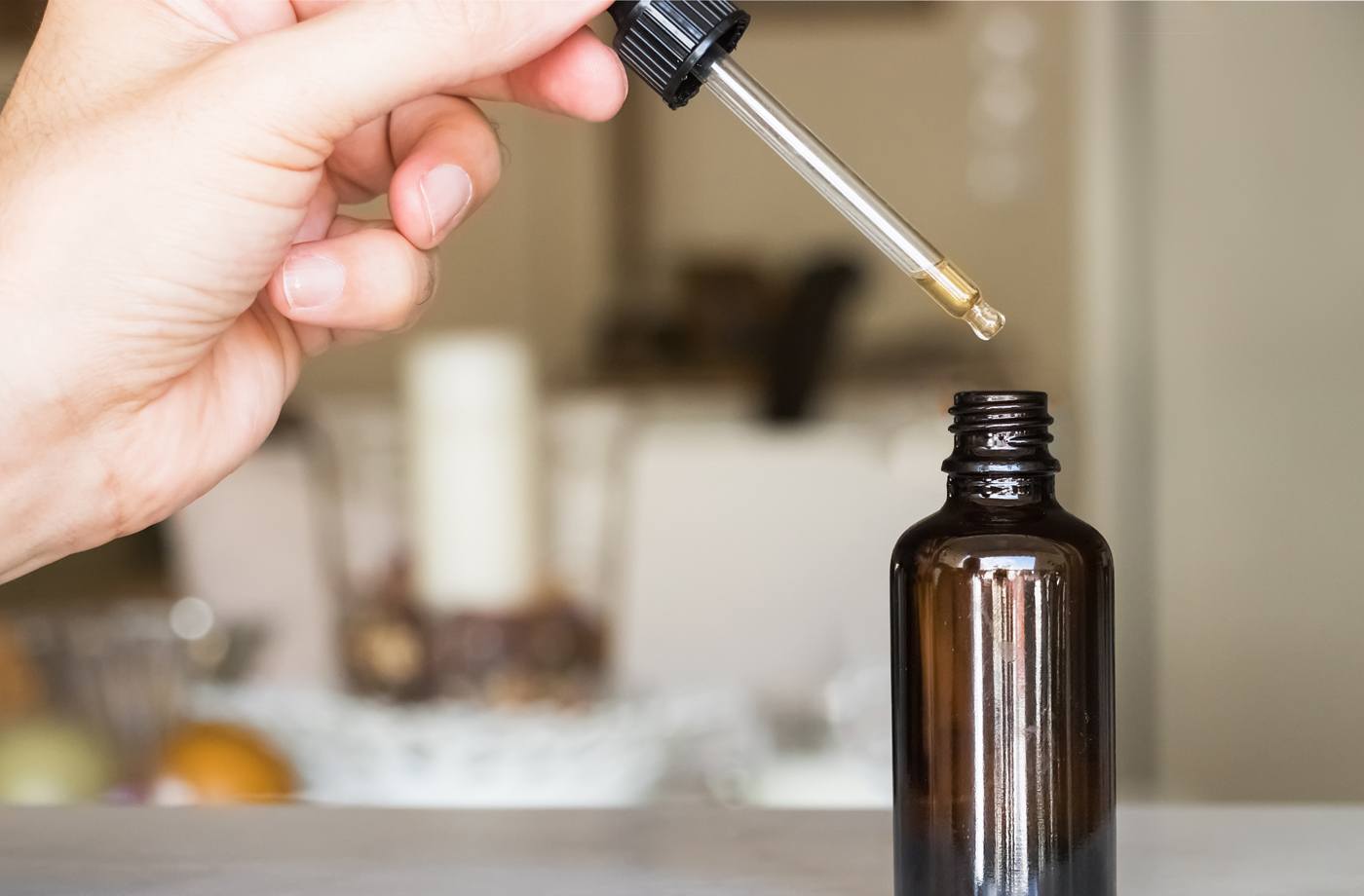How Microdosing Cannabis Helps Me Be Less Stressed and More Productive at Work
Back in the day, dabbling in cannabis meant one thing—getting high. But as more information emerges about pot's health benefits and it becomes legalized in a growing number of states, more nuanced uses for the plant are stepping into the spotlight. Some people are using CBD-infused products to reduce stress with zero buzz, while others are turning to tiny amounts of psychoactive cannabis—aka microdosing—for a mildly lit lift during their day-to-day activities. (Office tasks included.)
For insight into this burgeoning trend, we turned to Anna Duckworth, co-founder and editor-in-chief of Miss Grass, an elevated lifestyle shop and publication for women and cannabis. Read on for the 411 on 420's latest evolution.
Be honest: You’re reading this because you’re skeptical that microdosing cannabis could make for a better-than-usual workday. But you’re also hoping, in your heart of skeptical hearts, that there’s some truth to that claim.
I know there is, because I microdose cannabis myself. Not all the time, but some of the time. I exercise and meditate (occasionally) and take deep breaths to relieve stress, but a very low dose of cannabis is normally what I need to manage the exceptionally anxious moments. By the middle of a workday, it’s not unusual for me to feel tightly wound, and that’s when a tiny hit off of a vaporizer or a few drops of a tincture can level me out and make my to-do list feel much more manageable. It makes me feel relaxed right away, it restores my perspective, and just generally takes the edge off without affecting my ability to do whatever it is I’m doing.
People are experimenting with sub-perceptual doses of cannabis during what some might view as unusual activities—while working, at the gym, running errands, or playing with the kids.
What is microdosing? Typically, to microdose is to take small doses of of psychedelics—most commonly LSD, psilocybin mushrooms, or ketamine—on a semi-regular schedule to help manage pain, trauma, depression or one’s overall sense of wellbeing.

{{post.sponsorText}}
But lately, we’ve started to see the trend gain traction in cannabis circles, particularly in legal states like California. In these accounts, people experiment with sub-perceptual doses of cannabis during what some might view as unusual activities—while working, at the gym, running errands, or playing with the kids.
In a sense, this isn't surprising: We love to manipulate our bodies in a quest to be our best selves. We do it everyday through food, exercise, sleep, pharmaceuticals, illicit drugs, spiritual practices, injections, lymphatic drainage treatments—the list goes on. Biohacking is no longer a trend du jour; it’s become a sort of biological imperative. So it makes sense that a plant as powerful as cannabis should now be part of the conversation.
Here's what you need to know if microdosing cannabis is sparking your interest.

The pros and cons of microdosing cannabis
Those who microdose cannabis often cite feelings of mindfulness, a heightened awareness, a softened outlook, a sense of overall calm, a more collaborative disposition, and less irritability. This is all especially helpful in the context of work, where we often experience extreme stress or frustration with coworkers, deadlines, work-life balance, and even our relationships with ourselves.
Despite the many glowing reports, microdosing cannabis is not for everybody. And certainly, it’s not for everybody in the context of work—for instance, your office (or state) might not be cannabis-friendly and you definitely shouldn't put your job at risk. For some people, microdosing makes more sense at home, as a means of getting through the domestic tasks. Others like it for socializing or being out in the world.
At this point, there are scientific studies around cannabis use for anxiety and other mental health conditions, but none that specifically make the case for microdosing. For that, we can all thank the War On Drugs—one that continues today, thanks to Jeff Sessions and friends—for making it preposterously difficult for researchers to both secure funding and access to the plant. Either way, the message remains: Do your own research.
Sometimes we’re just looking for ways to optimize productivity, to keep stress to a minimum. Sometimes it’s just about trying to take the edge off during a day of back-to-back meetings. And that’s where microdosing cannabis has gained particular notoriety.
The good news is that we’re a pretty savvy bunch as a society. We do the work that, at one time, we counted on others in more official capacities to do for us: We listen to our bodies, we ask questions, we challenge our doctors (and our products), and we scour for more natural ways to manage all that life throws our way. Whereas cannabis consumption was once characterized as the ultimate act of rebellion for the do-nothing set looking to somehow do even less, a more measured approach to consumption has now been co-opted and publicized by people looking to do even more, even better.
Sometimes, the problems we’re trying to solve are more nebulous than a definitive diagnosis like cancer, epilepsy, or insomnia. Sometimes we’re just looking for ways to optimize productivity, to keep stress to a minimum. Sometimes it’s just about trying to take the edge off during a day of back-to-back meetings. And that’s where microdosing cannabis has gained particular notoriety.

How to microdose cannabis responsibly
As I've experimented with microdosing cannabis myself, I've learned a few things along the way. Below, I've outlined a few tips to keep in mind if you're thinking about trying it.
1. Realize that the goal isn't to get high
The point of microdosing is not to get noticeably high. Instead, the aim is to consume very low doses of cannabis to affect equally minor changes in your disposition. In that sense, it becomes even more important to practice microdosing at home before taking it to work. (More on that in a minute.) Many products are designed or dosed to get you high, which means it’s your job to take the recommended dose and reduce it to a place that shifts you but doesn’t leave you feeling at all faded. A good rule is to start with a quarter of your product's recommended dose.
2. Don't test it on the day you have a 1-1 with your boss
Cannabis is a very powerful plant and response can vary dramatically from person to person. If you’re Netflix-and-chilling at home with a joint, there’s no real and present danger should you experience a less-than-desirable effect. But if you’re experimenting with microdosing cannabis on the same day that you’re presenting to the board of your company, think again. A safe bet is always to dabble with these things at home where stakes are low, find your perfect microdose, and then take it to the public realm if you want. Patience is key.
3. Seek out a microdose-friendly product
This may be obvious, but the myth prevails that all cannabis products will get you high. There are two major compounds found in cannabis that are most common in the products we consume: The first is CBD or cannabidiol, which is non-psychoactive. The second is THC or tetrahydrocannabinol, which is the compound we credit for the high.
Some products are high in CBD and low in THC, which normally induces a mild psychoactive effect. Others are high in THC and low in CBD, which causes a more pronounced high and for the purposes of microdosing should be avoided. Others are a more balanced ratio of THC to CBD, which we call a 1:1 product and these will affect a slight high. And finally, there are tons of CBD-only products. For instance, a very high-CBD vaporizer like the Beboe Calming Blend CBD Vaporizer Pen won’t get you high at all, but can still support a real sense of calm and relaxation. Another popular non-psychoactive tincture is Juna Drops in Nude. (For non-psychoactive products, feel free to stick with the recommended dose on the label.)
The point is that each of these ratios—and the many variations between them—are very different, and finding the right one for you is a matter of trial and error.
4. Get straight on dose and mode of ingestion, because they’re both *really* important
With all the buzz around cannabis, there’s been surprisingly little discussion around dose. We’ve all eaten an edible, only to spend the next three days in bed, or whiling away the remainder of the party glued to the couch, calculating the many humiliating ways you might try to get up and walk out the door without anyone noticing you. It’s recommended that you always start with a low dose and familiarize yourself with the different modes of ingestion—smoking flower, vaporizing oils, eating edibles, or sublinguals (also known as tinctures).
Smoking and vaporizing can take effect in as little as five minutes and will make you feel more shifted in the mind. The Beboe vaporizer is a great low-dose vape. Its sativa-dominant oil blend is great for daytime and shouldn’t make you drowsy, as some other products might. Or for a slightly more psychoactive effect, try the dosist Bliss pen. If you’re starting with a vaporizer, try inhaling to a quarter or half lung capacity rather than full—do not take a full dose if microdosing is your desired outcome, because you will feel high.
If you’re eating an edible, look for products where the CBD outweighs the THC. If you don’t feel anything, wait—edibles or sublinguals can take longer to kick in and affect a more overall body high, so expect about an hour before you notice anything. Still nothing? Okay, try a little bit more.
And for a non-psychoactive but easy-to-dose product, try 2Rise Naturals CBD with Bioavailable Turmeric Tincture
5. Prepare for people to comment on your new disposition
For some people, the benefits of microdosing are immediately visible to those around them. Coworkers, friends, and partners might all pick up on a new lightness when you’ve consumed sub-perceptual doses of cannabis. If you’re not prepared to talk about it, come armed with a way to brush it off. If you do choose to talk about it, just remember it is still the prohibition era and some people harbor some pretty antiquated ideas about the plant. And while attitudes toward cannabis and its proponents are changing, it’s important to get really clear on your own beliefs so that you can use this opportunity to educate a curious onlooker.
6. Acknowledge your responsibility
The risk is small, but there is always a risk when trying something new. It doesn’t hurt to chat with your doctor before trying cannabis for the first time. No one has ever overdosed on the plant, and the worst thing that usually happens is a bout of paranoia. (Followed by whatever shenanigans you might get up to as you try to manage that outcome—like building a fort under your bed to escape, for instance.)
You do, however, have a responsibility when consuming and that is the same responsibility you have when not consuming: Be a sensible adult. For instance, consider whether you need to drive a car while under the influence, because you should not do that. Take a look at your schedule and make sure you aren’t under any major deadlines for work that might be compromised. It’s common sense, sure, but it never hurts to check in.
Want more from Miss Grass' queen bee? Here are her 8 favorite CBD products and her expert advice on dosing CBD.
Loading More Posts...